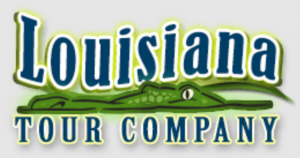Alligator Encounters Examined: Separating Myths from Facts
Milton Walker Jr., owner of Louisiana Tour Company, highlights that many alligator-related myths are deeply rooted in folklore or sensational media portrayals. “Alligators are often portrayed inaccurately, leading to unnecessary alarm. Understanding their natural behaviors and habitats helps foster respect and informed interaction,” said Walker Jr.
This release focuses on seven widespread myths, contrasted with factual information grounded in science and field observations.
Myth 1: Alligators Seek Out Humans
Fact: Alligators do not actively hunt humans.
Alligators are opportunistic feeders that prey on fish, birds, turtles, and small mammals. Attacks on humans are extremely rare and typically the result of mistaken identity or territorial defense, particularly during mating season or near nesting areas.
Myth 2: Alligators Can Leap Out of the Water to Grab People
Fact: Alligators can lunge, but only in certain conditions.
Alligators can rise vertically up to the waterline but cannot vault vertically to grab prey five feet above their surface. Sightings of massive leaps often involve juveniles chasing prey near the water’s edge. Such movements are impressive but contextually limited to feeding behavior.
Myth 3: Alligator Size Indicates Aggression
Fact: Larger alligators are not inherently more dangerous to humans.
Adult male alligators can reach lengths of 11 to 13 feet, yet large crocodilians tend to avoid humans, except when protecting nests or food sources. Smaller alligators may be more likely to approach shoreline areas in search of food scraps, increasing encounter frequency but not aggressive intent.
Myth 4: Alligators Have Poor Vision
Fact: Alligators possess sharp eyesight, particularly at night.
Specialized vertical pupils and a mirrored structure known as the tapetum lucidum provide alligators with excellent vision in low light. Hunt behavior is most common at dusk or night, when sense-based predators are most effective and alligators can detect movement near or above water.
Myth 5: Alligator Jaws Can Snap Anything Easily
Fact: Jaws close with immense force but open relatively weakly.
Alligator bite force ranks among the highest in the animal kingdom—up to 2,980 psi. However, muscles that open the jaw are far less powerful. In handling situations, securing the jaw closed is a standard safety procedure for handlers and professionals, though such actions are strictly task-specific.
Myth 6: Alligators Are Everywhere in New Orleans Waterways
Fact: Alligators are present in many rivers, swamps, and bayous but tend to avoid highly urbanized zones.
Alligators prefer quieter, more natural water environments. Sighting likelihood increases outside the city center in less developed areas. Even in semi-urban zones, alligators typically avoid heavily trafficked water bodies and aesthetic-runoff canals.
Myth 7: Alligators Are Endangered and Rare
Fact: Alligator populations are stable and protected under conservation guidelines.
The American alligator was previously listed under the Endangered Species Act but was removed after successful conservation efforts. Populations have rebounded across Louisiana, and controlled harvesting programs maintain natural balance without endangering species viability.
Safety Guidelines for Alligator Awareness
Louisiana Tour Company recommends the following best practices during wildlife encounters:
Maintain a safe distance from waterways known to support alligator populations.
Do not feed alligators; doing so disrupts their natural behavior and may encourage dangerous interactions.
Exercise extra caution during mating season (spring) and nesting season (mid-summer), when females may guard nests.
When boating, avoid shallow water fringes and remove fish remains promptly.
Tour operators, wildlife advocates, and local authorities face growing interest in alligator-watching excursions. Responsible encounters depend on accurate information and sensible precautions.
Walker Jr. emphasizes that these experiences can be educational and memorable when guided by factual understanding. Tours often provide naturalistic observation opportunities, combining safety protocols with insights into habitat, behavior, and reptilian role in local ecosystems.
As urban expansion continues in Louisiana, habitat overlap between humans and alligators becomes more common. Media attention to dramatic encounters has created exaggerated fears, while routine coexistence goes largely unreported.
Louisiana Tour Company invites residents, educators, and visitors to engage with alligator habitats through guided excursions, online information, and community outreach. The goal is to support awareness, safety, and appreciation of local wildlife without sensationalism.
Morgan Thomas
Rhino Digital, LLC
+1 504-875-5036
email us here
Visit us on social media:
Facebook
Legal Disclaimer:
EIN Presswire provides this news content "as is" without warranty of any kind. We do not accept any responsibility or liability for the accuracy, content, images, videos, licenses, completeness, legality, or reliability of the information contained in this article. If you have any complaints or copyright issues related to this article, kindly contact the author above.
Geothermal Rising Welcomes Geothermal Incentives in Big Beautiful Bill, Honors Geothermal Community’s Dedication
RESTIV Appoints Proven Industry Leader as New Director of Sales and Customer Satisfaction
Last Captive Elephant in Argentina Begins Her Historic Journey to Elephant Sanctuary Brazil
Więcej ważnych informacji
 Jedynka Newserii
Jedynka Newserii

 Jedynka Newserii
Jedynka Newserii

Bankowość

Rośnie liczba i wartość udzielonych konsumentom kredytów gotówkowych. Gorzej mają się kredyty ratalne oraz te udzielane firmom
Rynek kredytowy w Polsce co do zasady rośnie, choć nierównomiernie. Z danych Biura Informacji Kredytowej wynika, że najlepiej rozwija się segment kredytów gotówkowych dla konsumentów. Wartościowo wzrosła też kwota udzielonych limitów w kartach kredytowych. Według prognoz BIK w całym roku wzrośnie wartość zarówno udzielonych kredytów mieszkaniowych, jak i gotówkowych, choć tych pierwszych poniżej inflacji. Wcześniejsze cięcia stóp procentowych przez RPP nie zmieniły tej prognozy.
Transport
37,5 proc. środków z Planu Społeczno-Klimatycznego trafi na walkę z ubóstwem transportowym. Organizacje branżowe apelują o zmianę priorytetowych projektów [DEPESZA]

Ministerstwo Funduszy i Polityki Regionalnej z końcem czerwca zakończyło konsultacje Planu Społeczno-Klimatycznego, który otwiera drogę do pozyskania 65 mld zł (11,4 mld euro) z unijnego Społecznego Funduszu Klimatycznego. Polska będzie jego największym beneficjentem, a 37,5 proc. budżetu zostanie przeznaczone na bezpośrednie wsparcie osób narażonych na ubóstwo transportowe. Organizacje branżowe oceniają jednak, że walka z tym zjawiskiem może się okazać nieskuteczna. W toku konsultacji zgłosiły swoje zastrzeżenia co do priorytetów w wydatkach i sposobu wsparcia inwestycji w transport rowerowy.
Prawo
Firmy będą mogły przetestować krótszy tydzień pracy z rządowym wsparciem. Nabór wniosków ruszy w sierpniu

Ministerstwo Rodziny, Pracy i Polityki Społecznej uruchamia pilotaż krótszego tygodnia pracy. Zainteresowane wzięciem w nim udziału firmy będą się mogły ubiegać o wsparcie finansowe ze strony rządu. Politycy Nowej Lewicy, którzy są pomysłodawcami testu tego rozwiązania, przekonują, że finalnie zyskają na nim wszyscy, zarówno pracownicy, jak i pracodawcy, a ostrzeżenia o spodziewanych problemach gospodarki są mocno przesadzone.
Partner serwisu
Szkolenia

Akademia Newserii
Akademia Newserii to projekt, w ramach którego najlepsi polscy dziennikarze biznesowi, giełdowi oraz lifestylowi, a także szkoleniowcy z wieloletnim doświadczeniem dzielą się swoją wiedzą nt. pracy z mediami.


![37,5 proc. środków z Planu Społeczno-Klimatycznego trafi na walkę z ubóstwem transportowym. Organizacje branżowe apelują o zmianę priorytetowych projektów [DEPESZA]](https://www.newseria.pl/files/1097841585/rower3,w_85,_small.jpg)







.gif)

 |
| |
| |
|